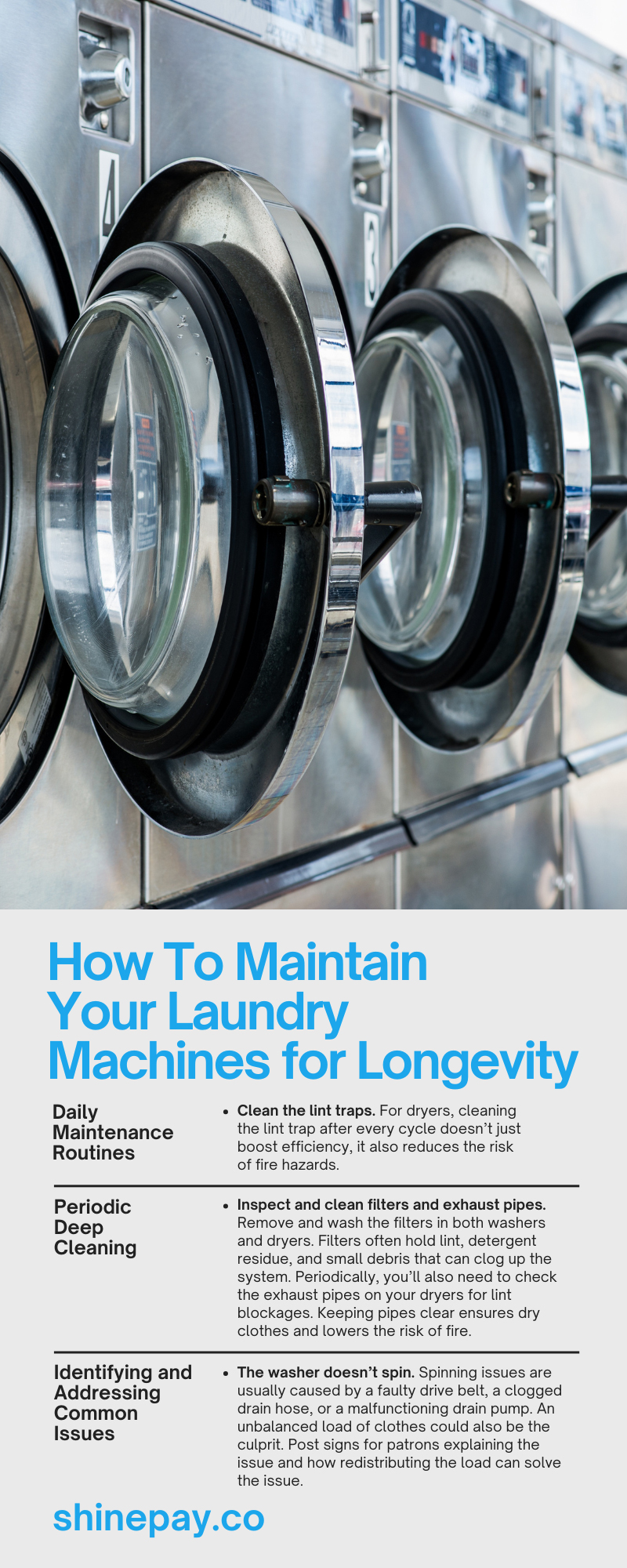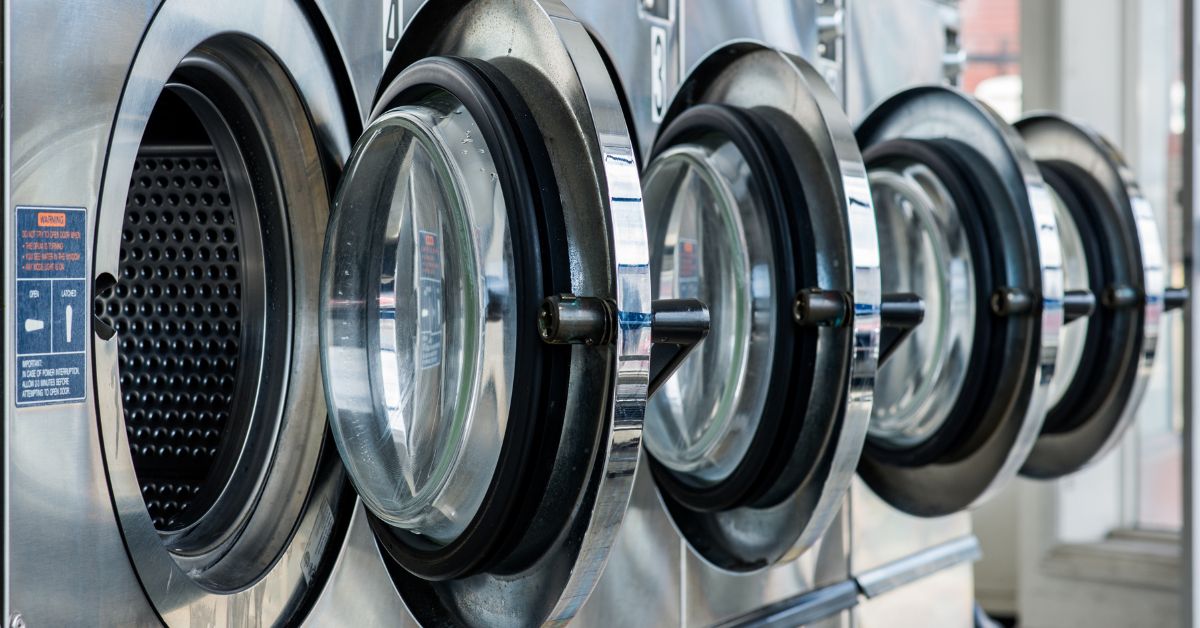For laundromat owners and apartment managers, laundry machines are essential—not just for convenience but for business success and tenant satisfaction. Keeping these machines in optimal condition helps you avoid costly repairs, ensure customer satisfaction, and extend the lifespan of your machines. If you’re wondering how to maintain your laundry machines for longevity, this guide will walk you through everything you need to know.
From understanding your equipment to implementing effective daily and periodic maintenance routines, we’ll cover it all. You’ll also learn how to troubleshoot common issues and understand when to call in a professional. Let’s take a deep dive into ensuring your laundry machines work for years to come.
Understanding the Equipment
Every type of laundry machine has unique functions and characteristics, which makes understanding your equipment a crucial first step in maintenance.
Top-Load vs. Front-Load Washers
- Top-load washers are heavy-duty and easier to maintain due to their straightforward mechanics. They’re great for heavy-duty cycles but often use more water compared to front-load machines.
- Front-load washers offer more efficient water consumption and provide a gentler wash for clothes. However, they are more prone to mold buildup, and keeping the door seals clean and dry requires extra vigilance.
Single-Load vs. Stacked Dryers
- Single-load dryers are easy to access and maintain individually.
- Stacked dryers save space, making them ideal for cramped laundromats or apartment laundry rooms. However, their height makes daily inspections slightly more challenging.
By understanding the specific needs of these appliances, you can tailor your maintenance routines accordingly.
Daily Maintenance Routines
Consistency is key when it comes to prolonging the lifespan of your machines. A simple daily maintenance routine can help prevent the minor issues that might escalate into major problems otherwise.
- Check for debris. Inspect washers for stray items like coins, pens, or keys left behind by users. These can cause internal damage to your machines if neglected.
- Clean the lint traps. For dryers, cleaning the lint trap after every cycle doesn’t just boost efficiency, it also reduces the risk of fire hazards.
- Wipe down surfaces. Regularly wipe the exterior of machines to remove detergent spills or water stains. This keeps the equipment looking clean for customers or tenants.
- Inspect for leaks. Quickly check for loose hoses or surface leaks—early detection is critical to preventing water damage or rust over time.
These small daily routines ensure that your laundry machines are always ready for their next cycle.
Periodic Deep Cleaning
While daily cleaning focuses on the surface level, periodic deep cleaning targets dirt, detergent buildup, and other residue that could impact the function of your machines. These are the items you should add to your to-do list.
- Clean washer tubs. Run an empty wash cycle with a specialized cleaner or a mixture of white vinegar and baking soda to break down residue and prevent odors.
- Inspect and clean filters and exhaust pipes. Remove and wash the filters in both washers and dryers. Filters often hold lint, detergent residue, and small debris that can clog up the system. Periodically, you’ll also need to check the exhaust pipes on your dryers for lint blockages. Keeping pipes clear ensures dry clothes and lowers the risk of fire.
- Descale when needed. Hard water can lead to mineral buildup. Using a descaling product periodically can prevent long-term damage. If your city has hard water, it may be worthwhile to install a water softener. Your patrons will enjoy cleaner clothes, and your machines and plumbing will last longer.
- Clean the rubber seals on front-load washers. For front-load washers, focus on cleaning the rubber door gasket with warm, soapy water and a soft cloth to prevent mold growth.
Deep cleaning ensures your machines continue running smoothly without any interruptions caused by buildup.
Identifying and Addressing Common Issues
No matter how well-maintained your machines are, occasional issues will arise. Knowing how to spot these problems early and address them can save you from costly repairs or replacements.
Common Laundry Machine Issues
- The washer doesn’t spin. Spinning issues are usually caused by a faulty drive belt, a clogged drain hose, or a malfunctioning drain pump. An unbalanced load of clothes could also be the culprit. Post signs for patrons explaining the issue and how redistributing the load can solve the issue.
- The dryer takes too long to dry clothes. Lint buildup in exhaust ducts is often the cause of inefficient drying. Check for blockages and remove them.
- The washer is leaking. A damaged door seal or loose inlet hoses are common causes of leaks. Replace seals that show wear and tighten or replace hoses as needed.
Quick Troubleshooting
Implement a checklist of basic troubleshooting steps for your employees, such as checking power connections or ensuring the drum door still seals. It may also help to post machine guidelines for users to follow, such as using the correct detergent type and amount.
Professional Maintenance and Servicing
While regular cleaning and troubleshooting cover much of the maintenance work, professional servicing can provide deeper insights into your machines’ health.
Consider scheduling professional maintenance at least once a year. Experienced technicians can check internal components, ensure electrical safety, and make adjustments that aren’t possible during daily upkeep.
With credit card laundry machines, for example, professionals also want to inspect and maintain the payment processing systems to ensure a seamless user experience. Investing in a technician service call can help mitigate potential downtimes and build customer loyalty.
Post Guidelines To Instruct Users
Educating users is one of the best long-term strategies for keeping your laundry machines in great shape. A posted set of clear and easy-to-follow guidelines ensures that every user contributes to your machines’ longevity.
- Leave washer doors open after use. Encourage users to leave the washer door slightly ajar after use to promote airflow and prevent odors.
- Use the right detergent. Oversudsing from incorrect detergent can lead to drain clogs or damage. Advise patrons to use high-efficiency detergent with clear instructions at each machine.
- Clean the lint trap. Use simple signage to remind everyone to clear the lint trap after their drying cycle.
Protect Your Laundry Machines and Your Investment
Learning how to maintain your laundry machines for longevity is essential for laundromat owners and apartment managers alike. With the right blend of daily maintenance routines, periodic deep cleaning, prompt troubleshooting, and professional servicing, you can extend your machines’ lifespan while saving on repair costs. Add to that the power of clear user guidelines, and your fleet of machines will remain efficient, clean, and appealing for all who use them.

